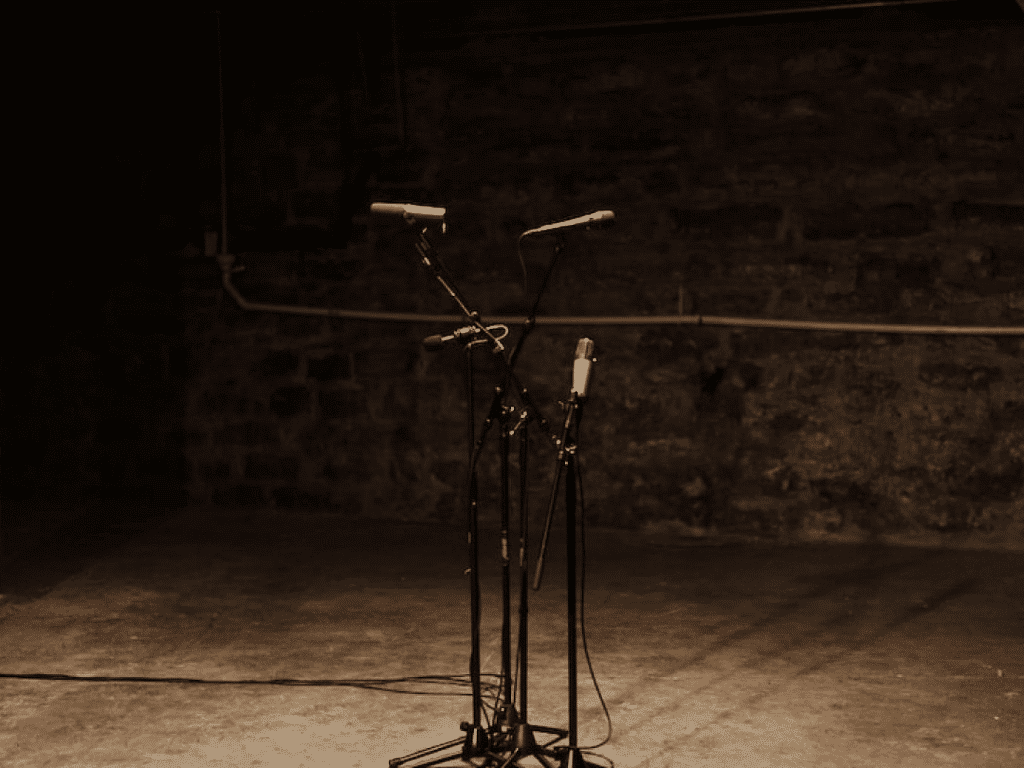Sound engineers must understand the polar patterns of microphones in order to ensure they select the right microphones for recording, as each type of polar pattern has its own characteristics and advantages.
We will take a closer look at each of these microphone boom configurations, explore their advantages and disadvantages, and discuss XY pairing and how it can be used to create a stereo image. Omnidirectional microphones pick up sound from all angles, making them the most versatile type of microphone. Figure-8 microphones are most often used in stereo recordings because they can capture sound sources from the front and back while rejecting sound from the sides. Cardioid, supercardioid, and hypercardioid microphones are also common, each with its own sound pickup configuration and rejection capabilities. Finally, XY pairing is a technique used to create a stereo image with two microphones.
1. Omnidirectional polar pattern model
A polar omnidirectional configuration is the most basic type of microphone polar configuration. It picks up sound equally in all directions, including the front, back, sides, and top. This type of polar diagram is ideal for picking up sounds from an extended area, such as a room. It is also the most natural polar configuration since it picks up all sound sources in the environment without any directional bias. Examples of omnidirectional microphones include figure-8 models, cardioids, supercardioids, and hypercardioids, as well as XY microphone pairs.
2. Polar diagram in 8
The polar diagram of Figure 8, also known as a bidirectional diagram, is a directional microphone that captures sound from the front and back, but rejects sound from the sides. This type of microphone is often used to record singers (with a person standing in the middle of two XY microphones) or for interviews where two speakers face each other. Compared to the omnidirectional polar configuration, the Figure 8 polar configuration rejects more background noise and is more sensitive to off-axis sources. However, it does not have the same ability to reject sound sources coming from the sides as cardioid, supercardioid, and hypercardioid polar patterns.
3. Cardioid polar pattern model
The cardioid polar pattern is the most commonly used in most studio applications. It mainly captures sound from the front while rejecting sound from the back up to 20 dB. This makes it an excellent choice for recording vocals, guitars, and other single-source instruments. When used in an XY pair, the cardioid polar pattern is ideal for capturing sound sources with a wide stereo image, such as a piano or drum kit. The cardioid directionality is also ideal for recording in non-ideal acoustic environments.
4. Super-cardioid polar pattern
The fourth polar configuration of a microphone is the supercardioid. It is a variant of the cardioid configuration, also known as the directional microphone configuration. This configuration captures sound from the front, and its range of capture is narrower on the sides. Compared to omnidirectional, figure-8, and cardioid polar patterns, the supercardioid pattern is more directional and requires a closer distance to the sound source. This configuration is commonly used in live sound reinforcement systems, as well as in overhead and drum microphones. The supercardioid pattern is also sometimes used in combination with the hypercardioid or XY patterns.
5. Hypercardioid polar pattern
The fifth and final polar configuration of the microphone is the hypercardioid configuration. This highly directional configuration is ideal for audio recording in noisier environments, as it captures sound mostly from the front and very little from the sides. It is also ideal for recording a single source from a greater distance. The hypercardioid polar pattern is similar to the supercardioid polar pattern, with the main difference being that the hypercardioid has a slightly narrower pickup zone, making it more directional than the supercardioid. When paired in an XY configuration, the hypercardioid polar pattern allows for a greater degree of stereo separation than an omnidirectional, figure-8, cardioid, or supercardioid microphone.
6. Pairing XY
The XY pairing is an excellent choice for capturing stereo sound with a minimal setup. It works by combining two cardioid microphones in a crossed position, resulting in a stereo image created by each microphone capturing different sounds from the room’s sides. This can be useful for recording a live music performance or any other audio source in which you want to capture sound from different angles for a more immersive experience. It is important to note that XY pairing only works with cardioid microphones, so if you’re looking to capture omnidirectional, figure-8, supercardioid, or hypercardioid sounds, you’ll need to opt for different polar patterns.
7. Polar pattern Shotgun Configuration
The Shotgun polar pattern is one of the most highly directional patterns available. It concentrates sound at the front and rejects sound at the sides. It is preferred when the sound source is distant and requires a higher level of directionality than other patterns such as omnidirectional, figure 8, cardioid, supercardioid, and hypercardioid. The Shotgun polar configuration is preferably used in conjunction with XY coupling to maximize its directionality.
8. Polar diagram line + gradient
The Line + Gradient Polar Pattern, the eighth microphone polar diagram, combines directional and omnidirectional characteristics to capture sound from the front and some sound from the sides. It’s not as directional as other polar diagrams such as cardioid, supercardioid, or hypercardioid, but it’s more directional than omni-directional or figure-8 polar diagrams. This polar pattern is most commonly used in an XY microphone pair for minimal phase shifting during stereo sound recording. As a professional French to English translator, this is the translated version of the given text.
In conclusion, mastering the polar patterns of microphones is a crucial step in recording audio with clarity and accuracy. Each polar pattern has its own advantages and disadvantages, so it is important to understand the differences between them to ensure that you are using the perfect microphone for your recording. Whether you are recording solo instruments or a full ensemble, choosing the right microphone can make all the difference.

